The conviction about the way the world is, independently of the way we take it to be, fuels controversy not only between realists and anti-realists of different stripes, but also among realists themselves. As a result a civil war seems imminent. Whether there will be a civil war within the empire of realism, however, can be answered only when we answer what it means to call anyone a realist. Old-style realist may say that the war is to be fought not within the empire but beyond its frontiers, for the ‘internal realist’ against whom it is waged is an anti-realist in disguise.
—Ghhanda Gupta, Jadavpur University, India
Every society has its religion. It is also clear, however, that every society has its own view, or description, of what “God” is. In other words, descriptions of god are culturally specific, and observer relative, features of specific subgroups or cultures of the human species. For that reason, Roy Rappaport, the former President of the American Anthropological Association, calls such terms as God, Allah, Brahman, Buddha, etc., and the descriptions most closely associated with those terms, “Ultimate Sacred Postulates.” But even though our situation is complex, we still want to know if there is something to which what one might appropriately call God corresponds .
I think we are interested in knowing if there are any intrinsically real facts to which Ultimate Sacred Postulates refer, and what exactly such a state of affairs would mean. Further, if there is such a state of affairs, we want to know what role the descriptive and other observer relative features might play in our coming to know, and understand, such a religious reality—to which the various human cultures are constantly referring. Indeed, Ultimate Sacred Postulates, as we will see, are always the most fundament cultural expressions about the nature of what is taken to be, either as the most real, or the most important feature of the real. Either way, I will argue from perspective of biological naturalism—as explained in the work of philosopher John R. Searle and exemplified in the work of archaeologist Brian Hayden and anthropologist Roy Rappaport—and from my own realist point of view that we already have enough reason and evidence for believing in something holy, i.e., sacred and numinous, to which Ultimate Sacred Postulates refer.
We will begin by taking a fresh look at a previous attempt to establish the existence of an Ultimate Sacred Postulate, namely, the existence of “the greatest possible being” of St. Anselm’s ontological argument. This logical argument was written almost a thousand years ago and is very well known; thus the task that falls to us is to understand its inner workings and meaning from a modern scientific, analytical, and realist philosophical perspectives. These perspectives work well together for as John R. Searle says:
“external realism” is not to be thought of as a theory or an opinion. It is rather a Background (his emphasis) presupposition, that is taken for granted…. There are two propositions [of Realism]...that are not, so to speak, up for grabs. They are not optional.... These are the atomic theory of matter and the evolutionary theory of biology. On the basis of these theories we can say the following…” (Mind, Language, and Society 40).
Moreover, we should take seriously St.Anselm’s ontological argument for the real existence of the greatest possible being, because we can learn much from exploring exactly what it is that the argument succeeds in establishing, and also from what it fails in establishing and why. That argument, as we can see on page 79 of Reason & Religious Belief, is here stripped of all Christian and theistic connotations:
1. Persons have the idea of a greatest possible being.
2. Suppose the greatest possible being exists only as an idea in the mind.
3. Existence in reality is greater than existence only in the mind.
4. Therefore, we can conceive of a being greater than the greatest possible
being, that is, a being that also exists in reality.
5. But there can be no being greater than the greatest possible being.
6. Therefore, the greatest possible being exists in reality.
This argument may or may not be logically sound, but more importantly, I believe, the difficulty in thinking through St. Anselm’s argument is due, first, to the inherent vagueness in terms such as, being, existence, and reality, and, second, to the misuse of the Ultimate Sacred Postulate, “the greatest possible being.” I will deal with the first problem first, and save the second, and more interesting problem, for later.
Most critics of the argument are mislead by its vagueness into simply assuming that the argument fails. For example, the editors of Reason & Religious Belief make the point as follows: “There seems to be something seriously wrong with an argument that, like Anselm’s, moves from a premise about ideas in our minds to establishing that something exists in reality. Yet despite these suspicions, philosophers have found it difficult to discern precisely where the argument is vulnerable and to make a strong case that this point of suspicion is a vice rather than a virtue” (80). Three pages later, one reads, “Some believe that the argument is obviously fallacious, for one cannot argue from concepts to reality.” But it is clear that one can logically move from concepts to reality. This should not be surprising. After all, “concepts” themselves are real and “reality” itself is a concept. For example, money exists on a purely conceptual level. Imagine if I won the lottery and the state put a million dollars into my checking account. What in fact has the state done? What exactly did they put in there: Gold? Paper? Plastic? No. Strictly speaking the state didn’t put any-thing in anywhere. What happened is that I conceived of some numbers that the state later randomly pulled out of a hat and as a consequence someone wrote, or spoke, some numbers to someone working at my bank, and as a result I now have a millions dollars. So, the question to my skeptical readers is, are they “real” dollars or just a million “ideas”? (For my incredulous readers I’ll be taking a more careful look at these “ideas” shortly.) For now, just let me say that Immanuel Kant was not completely right when he said that existence, “is not a concept of something that could be added to the concept of a thing” (qt. in Peterson et al. 81).
The problem with St. Anselm’s argument is not, as some skeptics thought, the problem of whether or not existence is a property; rather it is that there are different kinds of real existence with different ontological properties. After all, it is obvious that money is real, but it is equally obvious that money is not real like gravity; more precisely, money and gravity share different kinds of reality. Adopting the terminology that the philosopher John R. Searle employs in The Mystery of Consciousness, I hope to make some finer distinctions about what the ontological argument proves and what it doesn’t. First, notice the distinctions that Searle demands we make:
The natural sciences typically deal with those things of nature that are intrinsic or observer-independent in the sense that their existence [or reality] does not depend on what anybody thinks. Examples of such features are mass, photosynthesis, electric charge, and mitosis. The social sciences often deal with features that are observer-dependent or observer relative in the sense that their existence [or reality] depends on how humans treat them, use them, or otherwise think of them. Examples of such features are money, property, and marriage. (15)
He also insists that:
We need to distinguish the epistemic sense of the distinction between the first- and the third-person points of view, (i.e., between the subjective and the objective) from the ontological sense. Some statements can be known to be true or false independently of any prejudices or attitudes on the part of observers. They are objective[ly real] in the epistemic sense. (113)
An example of a statement that is epistemologically objective, which is also an observer-relative feature of reality, is: “All societies, like all individuals, hold some metaphysical beliefs.” Such a statement is epistemologically objective because it describes a social fact, which is not a matter of opinion; the statement is also an observer-relative feature of reality because if, say, all humans died today the statement would no longer describe a feature of reality. Social facts like “beliefs,” are mind-dependent, but intrinsic facts like “gravity,” are mind-independent. In other words, having metaphysical beliefs is a real mind-dependent but objective feature of homo sapient sapiens: everywhere you find a human being you will be able to detect—from a third-person point of view—metaphysical beliefs. In contrast, an example of a statement that is epistemologically subjective is, “My metaphysical beliefs are better than yours.” In other words, the reality of that last sentence is only detectible from the first-person point of view; that is, its truth value is a matter of opinion.
Coming back to St. Anselm’s argument, instead of proving the ontologically objective reality of the greatest possible being—which has both ontologically objective and ontologically subjective features—the argument proves only the observer-relative half what St. Anselm would normally call God. That is, St. Anselm’s argument only implies that the greatest possible being’s existence is intrinsically ontologically objective but it does seem to establish that relative to observers its reality is epistemologically objective.
Here a skepic might object by noting that by definition an externally real being conceived as “the greatest possible being” would have to be both ontologically subjectively real and ontologically objectively real, or else one greater could be conceived who was both, and thus was greater than “the greatest possible being” of our ontological argument who has only ontologically subjective reality. But the skeptic’s is not a valid argument, because it should be remembered that I did not claim that St. Anselm’s argument established the existence of both an ontologically subjective and objective being, but only that it established the real existence of at least an ontologically subjective greatest possible being. The problem is one of vagueness inherent in the term “being.” However, the two categories are not mutually exclusive, and to establish the existence of the subjectively real ontology of the greatest possible being is not to deny that it also has an objective ontology. Indeed, the objective ontology of the greatest possible being, I do not believe can be established only by thinking, or even by what I will soon call collective intentionality, but I will argue later from the work of Rappaport that it can be “experienced.” At the moment I only need to show that these two categories are, indeed, not mutually exclusive.
Their compatibility is ensured by a further distinction noted by Searle, namely, the distinction between “intrinsic” and “derived” intentionality. Intrinsic intentionality is that which only minds can have, by virtue of being a biological feature of brains. Derived intentionality, on the other hand, is that which words can have, by virtue of being a linguistic feature of minds. John Searle explains:
The distinction between intrinsic and derived intentionality is a special case of a much more fundamental distinction between those features of the world that are observer-independent, such as force, mass, and gravitational attraction, and those features that are observer-dependent, such as being a knife, or a chair, or a sentence of English. Intrinsic intentionality is observer-independent—I have my state of hunger regardless of what any observer thinks. Derived intentionality is observer-dependent—it is only in relation to observers, users, and so on, that, for example, a sentence of French has the meaning it has…. Consciousness and intentionality, though features of the mind, are observer-independent in the sense that if I am conscious or have an intentional state such as thirst, those features do not depend for their existence on what anyone outside me thinks. (Mind, Language, and Society 94)
It is of the nature of the human world that some features, like gravity, are objectively real intrinsically; and some features, like money, are objectively real epistemologically, by virtue of, “how humans treat them, use them, or otherwise think of them” (Searle 15). But there is also a third position noted of states like “thirst” or “hunger”—and, I will argue later, religious states of consciousness—that are both ontologically objective because they are biological states with intrinsic intentionality and ontologically subjective because only I can subjectively experience of my objectively real thirst. For example, Searle writes:
The most biologically primitive forms of intentionality are those of desire that involve bodily needs such as hunger and thirst. Both of these are intentional because both are forms of desire. Hunger is a desire to eat; thirst is a desire to drink. Here is how it works. A lack of water in the system causes the kidneys to secrete renin, and renin acts on a circulating peptide, called ‘angiotensin,’ to make angiotensin 2. This substance gets into the brain and attacks portions of the hypothalamus, causing an increase in the rate of neuron-firing in those portions. This in turn causes the animal to feel a conscious desire to drink. (Mind, Language, and Society 95)
Such an understanding of thirst makes clear that it is both ontologically objective and subjective. Thirst is objectively real in that it is an intrinsic feature of the human biology, which can be described from a third person perspective, i.e., thirst has a “third person ontolgoy.” Thirst is also subjectively real by virtue of always be experienced as one’s own thirst, i.e., thirst has a “first person ontology,” too.
Searle also makes this important observation: “Science does indeed aim at epistemic objectivity. The aim is to get a set of truths that are free of our special preferences and prejudices. But epistemic objectivity of method does not require ontological objectivity of subject matter. It is just an objective fact—in the epistemic sense—that I and people like me have pains [and that some have numinous religious experiences]…. The aim of science is to get a systematic account of how the world works. One part of the world consists of ontologically subjective phenomena. If we have a definition of science [or philosophy] that forbids us from investigating that part of the world, it is the definition that has to be changed and not the world” (Mystery of Consciousness 114).
Indeed, I will argue later, by analogy, that the ontology of numinous states of consciousness is like that of thirst. Now, I will only provide, for contrast, the neurological account found in James H. Austin’s, Zen and the Brain, of the “Light” that many mystics report having as part of their religious experiences:
Acetylcholine nerve cells down in the brain stem normally send volleys of impulses up to influence the visual pathways. The net resut of this is that more visual messages now flow through the lateral geniculate nuclei. These moments of enhanced visual transmission occur especially during the transition period between slow-wave sleep and desynchronized sleep. An extra surge of visual excitation could be perceived as light as it goes on next to relay through the superior colliculus, the zona incerta, and the pulvinar of the thalamus. Normally, it will also be within such higher-order projections that we start to develop s subliminal awareness of the space all around us. The experience of an enveloping light could arise when additional impulses, signaling “light,” spread through this normally subliminal “sense of place.” (Zen and the Brain 462)
Similar naturalistic accounts of religious states of consciousness are also be provided by Hayden and Rappaport. But I like this account by James H. Austin (not to be confused with J.L Austin the philosopher of speech acts), because it specifically addresses the experience of “Light”—a key metaphor found universally in the mystical literature. Physiological changes in the body, of which the mind is a feature, can produce mental states with an ontology similar to that of thirst or hunger, that is, mental states with both a first-person ontology (i.e., ontologically subjective) and third person ontology (i.e., ontologically objective). If this understanding is correct, then descriptions of religious states of consciousness correspond to a real fact or state of affairs about the external world, or at least such descriptions can be seen as attempts to refer to such facts. But we should not get ahead of our selves.
Indeed, we must begin by noting that when Searle writes about the “social and institutional reality” of facts like the epistemological objectivity of money and so on, he does so in the context of a much wider discussion about “how the mind creates an objective social reality” (Mind, Language, and Society 111). In that discussion he notes that thinking that money is money is, “necessary but not a sufficient condition” to establish it in reality as an institutional fact (Mind, Language, and Society 112). Also, we must keep in mind that as a scientific realist, Searle makes a strong distinction between facts on the one hand, and descriptions of facts on the other. He explains the distinction clearly:
It is true that we need a vocabulary to describe or state the facts. But just as it does not follow from the fact that I see reality always from a point of view and under certain aspects that I never directly perceive reality, so from the fact that I must have a vocabulary in order to state the facts, or a language in order to identify and describe the facts, it simply does not follow that the facts I am describing or identifying have no independent existence…. [For example,] I weigh 160 in pounds and 72 in kilograms. So what do I weigh really? The answer is, both 160 and 72 are true depending on which system of measurement we are using. There is really no problem or inconsistency whatever. (Mind, Language, and Society 23)
However, epistemology is as important as ontology and, returning to St. Anselm, even if we accept that the greatest possible being is at least as real as, say, money, we are still left with one crucial question.
If money is real as a certain kind of human invention (as it most obviously is), how did it come to have the kind of reality that it has; and by analogy, how did the greatest possible being come to share in, at least, that kind of reality? In other words, if Ultimate Sacred Postulates like the greatest possible being are inventions, what is the history of this invention?
According to Searle, a social fact is simply, “any fact involving two or more agents who have collective intentionality,” regardless of whether or not the agents are capable of using a language, or even if the agents are not using the same language or descriptive system; for example, one of two people digging a hole might refer to the shovel they are sharing in English, while the other person might refer to the shovel in Spanish (Mind, Language, and Society 121).
Institutional facts, in contrast, are built up from social facts. Only agents with language can invent institutional facts. The other conditions, besides merely thinking, needed to establish institutional facts Searle calls collective intentionality, the assignment of function, and constitutive rules. We will have to understand these conditions before we can see how they apply to the greatest possible being specifically and more importantly to Ultimate Sacred Postulates generally.
First, by “collective intentionality” we must understand that the notion does not violate the standards of methodological individualism. That is, the term does not refer to any mental entities that exist outside of individual people. Instead, all collective intentionality means is that we individual human beings sometime have intentional mental states of the form “we-intend,” as well as those of the form “I-intend” (Mind, Language, and Society 119). The first premise of the ontological argument above meets this condition with the first clause, “Persons have the idea of…”
The second condition of an institutional fact is that it must be made up of constitutive rules. That is, institutional facts must be made up of rules that constitute behavior. For example, following the rules of chess constitutes playing chess. Constitutive rules are to be contrasted with rules that only regulate an activity. For example, following the rules of the road only regulates the way one drives but do not constitute driving. Again, the ontological argument above easily meets this condition too. Following the rules of logic constitutes making a logical argument .
The third condition that we must satisfy in order to identify and compare the institutional reality of money with that of Ultimate Sacred Postulates, such as the greatest possible being, is that of “the assignment of function.” This last condition, I propose, is the obvious key, although not at first, to understanding the nature of Ultimate Sacred Postulates, and as such we will take our time exploring many of its implications. (Some of which are surprising, such as the fact, yet to be demonstrated in this paper, that “scientific realism,” like the greatest possible being, is also an Ultimate Sacred Postulate. But this road is long and unpaved so we must travel slowly if we hope to reach our destination with our faculties intact.)
However, the point to be gathered here is simply that, “all functions are observer-relative,” in that:
[Functions] only exist relative to observers or agents who assign the function. This fact is disguised from us by the fact that often we have discovered functions in nature. We discovered, for example, that the function of the heart is to pump blood. But remember, we could only make that discovery within the context of a presupposed teleology. It is only because we take it for granted that life and survival are to be valued that we can say the function of the heart is to pump blood…. The functional attribution introduces normativity. For example, we can now talk about better and worse hearts, heart disease, and so on. The attribution of function presupposes the notion of a purpose, or a goal, or an objective, and thus the attribution ascribes more than just causal relations…. Causation is observer-independent; what function adds to causation is normativity or teleology. More precisely, the attribution of function on causal relations situates the causal relations within a presupposed teleology. (Mind, Language, and Society 122)
The question of from where does the “presupposed teleology” arise will be explored later, but for now let’s look at how the three conditions for the invention of institutional facts—collective intentionality, constitutive rules, and the assignment of function—work together to create real ontologically subjective facts regardless of their description.
The most apropos example that Searle gives us of how the three conditions work to establish institutional facts is that of “the wall.” That is, Searle asks us to, “imagine a group of primitive creatures more or less like ourselves (my emphasis),” who have come together:
[And while] acting as a group, they build a barrier, a wall around the place where they live. [Searle doesn’t] want to call the place where they live a ‘village,’ or even a ‘community,’ because those terms might seem already too institutional. But these individuals, we will suppose, do have shelters—even caves would do—and we suppose they build a wall around the area of their shelters. The wall is designed to keep intruders out and keep members of the group in.
The wall has an assigned function in virtue of its physical features. We suppose that the wall is too big to climb over easily and that the inhabitants of the shelters can easily stop such climbing…. [Now the next step,] let us suppose that the wall gradually decays…. [but]…as a matter of fact, [the inhabitants] treat the line…as if they understood that it was not to be crossed. (Mind, Language, and Society 125)
This “shift” from the wall functioning in “virtue of its physical features” to it functioning by “virtue of the collective acceptance or recognition” is what establishes institutional facts. Furthermore, all institutional facts have what Searle calls “status functions” (Mind, Language, and Society 126). That is, money is money because it has the status of being money, not by its physical features, which, after all, can be “counterfeited .” Thus, our task now is discovering the appropriate “assignment of function” of Ultimate Sacred Postulates in order to satisfy the third condition of an institutional fact.
Also, we must remember that such a function must meet two sub-criteria: it must have first achieved its function by virtue of its physical features, i.e., reducible to physics, biology, or chemistry, which later “erode” away leaving only the “status function,” and second, it must “introduce normativity” in the same way that assigning a function to hearts introduces the notion of there being “better or worse hearts” (Mind, Language, and Society 122).
I therefore propose that the function of Ultimate Sacred Postulates is the ordering and uniting of societies (by way of ordering and uniting their world-views) much in the same way that walls and borders do. For such an ordering and uniting of society there certainly are better and worse sacred postulates. Furthermore, I propose that numinous or ecstatic states of consciousness such as those derived from the biological and chemical transformations of human physiology during the most archaic kinds of religious rituals, such as those involving long periods of drumming and dancing, stands in the same historical relationship to Ultimate Sacred Postulates as Searle’s caveman wall stands to, say, international borders.
We will therefore start by looking carefully at the history and nature of religious rituals and states of consciousness. In other words, we will consider the function that the ineffable religious, or mystical, participation in alternate states of consciousness has played in the evolution of culture to see if indeed they meet the three conditions of institutional facts. Specifically, we will examine the work of the archaeologist Brian Hayden, who, in his Shamans, Sorcerers, and Saints: A Prehistory of Religion, claims that the ability of humans to enter into “ecstatic religious states” was a key adaptive feature of our species “for more that 99.5 percent of human existence,” which if true will allow us to assign a normative function to religious rituals as responsible for much of human adaptability . Hayden writes that he takes an, “ecological approach (encompassing both cultural ecology and political ecology)…. [and uses] scientific procedures in order to evaluate competing ideas about the past” (Hayden 12). Archaeologists like Hayden, “use scientific procedures in order to evaluate competing ideas about the past. [And, they] make the details of their theoretical models explicit so that they can be more easily evaluated, and they develop hypotheses in order to test their models by obtaining new observations about the past” (Hayden 12). Thus, as a scientist committed to naturalism, Hayden’s work is fundamentally compatible with realism. After looking at the history of religious rituals we will, with the help of Roy Rappaport’s Ritual and Religion in the Making of Humanity, examine the nature of such rituals with an eye to discovering what facts about rituals allowed early humans to assign adaptive or normative functions to them. But first, before going farther, I want to introduce a few technical terms.
Hayden often uses the term “shamanism” in a technical sense. For example, he writes, “Shamanism is not a religion per se but rather a religious technique that can be used within many different religious frameworks …. Shamanism is a component of religious activity; it does not necessarily constitute the totality of a group’s religions beliefs or activities” (48). Moreover, “shamanism,” as understood here, is composed of any number of techniques whose efficacy are to be understood naturalistically. This is an important qualification to make because it is not the primary aim of this paper to provide a phenomenological description or account of religious experiences, but rather to establish and understand the meaning and role played by Ultimate Sacred Postulates, such as the greatest possible being, from the perspective of “external realism.”
The second term is Rudolf Otto’s “the Holy,” but only as adopted by Rappaport and used here in this paper. That is, we are here to understand the Holy in a very limited way as comprising, for our purpose, of only two features, namely, the sacred and the numinous . The sacred is the speakable half of the Holy which can be spoken about—and which includes Ultimate Sacred Postulates. The numinous, in contrast, is the ineffable half of the Holy, of which nothing can properly be said. Obviously, this paper will continue to concern itself almost exclusively with describing and exploring the public sacred half of the Holy.
Returning to the argument, religion has always played a key role in our species’ survival. For example, Hayden claims that, “it is precisely the earthshaking emotional experiences created in ecstatic religious rituals that were adaptive…. [as] means of emotionally bonding people together” (Hayden 31). In fact, Hayden suggests that,
This bonding is, in essence, what…the original function (my emphasis) of religion was among hunter-gatherers [of prehistory]. Like kinship emotion, religious emotions created bonds and moral imperatives of cooperation, mutual help, and sharing between bands that would not be broken no matter how dire the circumstances. Groups that had the potential for such religious emotions and used them by holding rituals in which the participants entered into ecstatic states, communication with common deities or totem ancestors, would be more likely to survive because of mutual help in times of need. (Hayden 32)
One thing immediately stands out from the above analysis of the original function of religion; for the vast majority of our history as a species the emphasis was on both the numinous and the sacred. In other words, it appears that the emphasis was put on the real fact of numinous experience, i.e., “religious emotions,” and derivatively, on that fact’s description, i.e., moral imperative, deities, totem ancestors, etc. The important question of what came first, the numinous or the sacred, will be resolved soon.
At this point, Hayden begins by making an observation that he believes is as true today as it was in the days shortly after our ancestors were forced down from the trees in Africa because of climate changes. He writes:
There are few circumstances that can shake commitments made when one enters into ecstatic states and when one experiences the strong emotions that arise from connections with forces that seem to be beyond the self and beyond this world. These forces are even stronger that ties to parents or brothers and sisters…. [In other words,] religious forces and experiences can be far stronger than logic, reason, or science. When dealing with ecstatic religious states, and even milder forms of religious experience, we are dealing with powerful emotions that commit people to ideals that no earthly external conditions appear capable of altering. (31)
First, this talk of “religious forces” should not disturb us. Consider the words of John R. Searle: “For us, if it should turn out that God exists, that would have to be a fact of nature like any other. To the four basic forces in the universe—gravity, electromagnetism, weak and strong nuclear forces—we would add a fifth, the divine force. Or more likely, we would see the other forces as forms of the divine force. But it would still be all physics, albeit divine physics. If the supernatural existed, it too would have to be natural” (Mind, Language, and Society 35). To which I could only add that, if so, to converse would also have to be true—i.e., the natural would have to be supernatural.
Secondly, Hayden claims that it was the power of religious states of consciousness, or in other words, the power of participation in the numinous, to forge belief systems that override even biological survival instincts and commitments of families and clans that is responsible for the role that culture now plays in the life of the human animal.
Indeed, from an evolutionary perspective, he points out that:
Groups that had the potential for such religious emotions and used them by holding rituals in which participants entered into ecstatic states, communication with common deities or totemic ancestors, would be more likely to survive because of mutual help in times of need. Groups that did not follow such sacred imperatives might be found after severe crises as desiccated corps in the sand—reviled by survivors as object lessons of what happens to those who do not follow the ways of the gods or ancestors. In this way, natural selections could have progressively strengthened and intensified the human penchant for religious experience and the ability to enter into ecstatic or altered euphoric states. (32)
This scenario Hayden suggests might reach back as far as three million years ago to, “the first inklings of a notion of soul or afterlife [which] comes in the form of a reddish-brown jasper cobble left at Makapansgat, South Africa, about three million years ago” (Hayden 95).
As an archeologist Hayden is able to provide a vast amount of empirical evidence for his argument, but I will note only the major bench-marks in cultural evolution as regards the numinous and the sacred. It is a history littered with physical artifacts that amazingly reaches back before the first of homo sapiens sapiens to our shadowy “hominid” origins. Indeed, all three authers, Searle, Hayden, and Rappaport suggest in passing that it is possible that what we call the social facts of religious culture and the intrinsic facts of the numinous actually predates the human species.
However, the important thing here is that entering into religious states of consciousness was so functionally successful, as an adaptive behavior, that its main features remained virtually unchanged for hundreds of thousands, if not millions, of years. Indeed, the first major change in attitude towards religious states of consciousness is marked by the emergence of the famous cave paintings of the Upper Paleolithic, 35,000 to 10,000 years ago.
The geographic location of these caves coincides with geological features such as “bottle necks,” which migratory animals must pass through and where they can be hunted in large numbers, and thus producing history’s first economic surpluses, which were to have a major impact the future on religious rituals (Hayden143). Hayden tells the story:
As sanctuaries for elite initiations and rituals, the painted caves of Europe were designed to make powerful impressions on people…. These caves were used in order to restrict access and exclude the general public so that a more select group would have control over rituals involving altered states of consciousness and over supernatural claims that could legitimize political power…. This entire new complex … must have constituted a decisive turning point in the evolution of religion, because it was the beginning of a fundamental division between popular cults and elite cults. This represents a change in traditional religion brought about by those in power who used religion as a means to manipulate and control other community members. It is the harbinger of exclusivity and the decline of the all-inclusive participatory sacred experiential cults. This is the vanguard of new religious practices in which the right of the individual to contact and participate in the sacred aspects of the universe is curtailed by self-aggrandizing individuals who see the desire to be one with the sacred forces of the universe as a political tool… (147)
Two things: first, Hayden’s description fits the logic of constitutive rules, X counts as Y in context C, as explained by Searle. That is, religious initiation counts as political legitimation in the context of early societies. Second, such religious initiations had the political function of dividing the popular from the elite cults. Here the prehistory of religion, which was marked by an unrestricted access to participation in religious states of consciousness, begins to be eclipsed by the history of religion, which is also the history of religious elitism and exclusivity.
The next great step toward the present day was the birth of agriculture. By this time the “shaman,” in the special sense of the one who knows the physical, biological, chemical, and psychological techniques of ecstasy, had been fully differentiated from the masses and employed by the political elites to initiate their children into the “mysteries,” thereby legitimating the children’s future status as rulers. The masses were relegated to popular fertility cults, which they participated in willingly in the hope that one day they too could control enough surpluses to throw the great public feasts that were the indication and obligation of political leadership (Hayden 174). “Indication” and “obligations” are technical terms employed by Rappaport, which we will explore later.
That there were now popular versus elite cults is not to imply that the masses were not interested in the numinous or in alternate states of consciousness. Indeed, Hayden cites several experts and claims, “that the real reason why wheat, barley, and maize were originally domesticated was to produce beer, which again is traditionally used only in feasting contexts” (175). But the main idea is that,
[W]e can see the dilution or subordination of the original ecstatic spiritual nature of the shaman in order to accommodate political goals of the families or groups that sponsor their own shamans and underwrite their training. Eventually this trend will produce priests who follow their books without any concern for ecstatic experience or spiritual travel. (152)
However, we should not go too fast. After agriculture, came architecture, which made concrete many of the religious qua cultural “advances” produced by planting societies. The pattern all over the ancient civilizations was that from “the Egyptians to the Aztecs,” Hayden notes, “The actual sanctuary of ‘public’ cults always seems to have been reserved for the highest-ranking elites, whereas the public aspect of the cult took place adjacent to the shrines or temples” (210). He further notes that, “In this way, shamans could be isolated, marginalized, and more easily manipulated by elites… In the new [public] cults, priests began to administer the public rituals in controlled fashions and to oversee public feasting. [Here,] there was little trace of ritual ecstasy other than the altered states brought on by inebriation” (211).
Here we have another key moment. By arguing that the greatest possible being has the same kind of ontology as institutional facts, like international borders, by virtue of its status function, we were forced to look at ecstatic religious states as “the wall that eroded,” leaving behind only the Ultimate Sacred Postulates that they engender to serve the function of ordering and uniting societies. At the time of the cave painting, we saw how, with the rise of the shaman, the ubiquity of ecstatic states first began to erode. Now with the rise of priest craft, we see the further erosion of the numinous and the emphasis put on the sacred—i.e. Ultimate Sacred Postulates like the greatest possible being.
Furthermore, there were also military cults which too had ecstatic rituals to “psych themselves up” for the terrifying hand-to-hand combat (Hayden 284). The warrior cults also sometimes struggled for power with the priestly cults, but both of these factions were mostly dominated by the ancestor qua political cults, which ultimately drew their power from the exclusive, i.e., truly shamanic, initiation (Hayden 283). Exactly what the phrase, “drew their power from” means is looked at very closely in the work of Rappaport. But for now, we note with Hayden that in many of the great Indo-European myths we see all of these strands intermingled with the idea of the “Drink of Immortality” – e.g. soma in India, ambrosia in Greece, madhu in Ireland – which linked the military to the priest of public rituals, and the priest to the rulers, and the rulers to the increasingly marginalized private shamans who linked, by their ritual knowledge of how to induce religious states of consciousness, this world’s socio-political organization to the greater cosmic structures of the universe and existence.
Shortly after this state of affairs comes the next great, and perhaps decisive, development in the evolution of religion. That is, “the development of large-scale elite-sponsored spectator and feasting cults headed by educated, literate priests [and which] probably constituted the beginning of the ‘book’ religions …” (362).
With the rise of written religions the role of religious states of consciousness in society took another decisive turn. Here the numinous was further eroded, leaving behind a more pure status function for that aspect of the Holy that Rappaport calls Ultimate Sacred Postulates. That is, with written stories to disseminate, the “official” religious world view elites no longer needed the shamanic initiations for political legitimacy. As a result, the role that the numinous played in society’s elite circles was displaced by Ultimate Sacred Postulates. Henceforth, the numinous experiences of alternate states of consciousness were now mostly to be found only in new “mystery religions,” of which the Eleusinian mysteries in Greece were a good example (Hayden 366).
However, one limitation of the first “written” religions was that they tended to be impersonal accounts of official gods and thus had little appeal to the inner lives of people. “In contrast,” Hayden notes, “mystery cults emphasized personal rather than public relations with deities, and this resulted in a new religion-based morality that would pervade all aspects of the followers’ lives all the time” (Hayden 367). The combination of access to religious states of consciousness and a personal relationship with deities made the mystery cults—which first arose in urban centers where “written” religions first began to replace elite shamanic cults—an attractive if dangerous alternative to official religion. Hayden puts the matter even more strongly:
The emergence of the mystery cults represents a revolution in the nature of religious life for the general population because of their focus on morality and because they restored the participatory ritual ecstatic aspects to the religious life of everyone who wished to be initiated into the cults. Mystery cults again made it possible for everyone to obtain direct ecstatic contact with, and direct personal knowledge of, the gods, or at least the sacred forces they represented. The very large populations in urban centers of the empire and the diverse origins of citizens made it difficult for rulers to control religious developments as they had more successfully done at the chiefdom and city-state levels. However, elites certainly did their best to keep a grip on all group rituals. In Rome, religion and politics were tightly intertwined by priest-politicians [i.e. no longer shamanic-politicians]. Religious cults were regulated by the Senate, which portrayed itself as the central mediator between the gods and humans. (370)
Here we see an intensification of the erosion process. It is directly comparable to the history of how money came to be an institutional fact by virtue of it having a status function. For example, as regards the history of money, Searle writes, “Finally, and this development took a long time, some later genius discovered that you could forget all about the gold and silver and just have the bits of paper” (Mind, Language, and Society 128) . But the point here is that new political elites tried to “curtail or eliminate direct ecstatic ritual experiences” by offering spectator public events on the one hand, and by pushing those most interested in religious states of consciousness into monasteries (Hayden 378).
I do not feel that I can do justice to the history of any of today’s great book religions in the small space of my thesis . I will say only that today’s western religions were successful because the “certainty” created by their exclusivist claims, what Hayden calls “advantages in demanding total commitments,” won out over the “insecurity” offered by their more tolerant competitors (Hayden 398).
However, now we must turn from the history of religious rituals to the nature of religious rituals in order to understand what it means that the greatest possible being is real. That is, so far we have shown that the Ultimate Sacred Postulate of the ontological argument meets all of the conditions for attaining the reality of an institutional fact in virtue of its status function. But I believe we can make an even stronger claim, namely, that the cultural process of abstracting away from the numinous, via the archaic and ubiquitous ecstatic religious states of consciousness, once available to anyone prior to the emergence of the shamanic complex around 35,000 years ago, continued to advance. Indeed, I believe that—just as the ubiquity of archaic ecstatic religious states of consciousness was eroded by the cultural emergence of the shamanic religious complex, then eroded further by priest craft, and then eroded further still by the book religions—philosophy, logic, and science, by abstracting out the sacred, have almost completely eliminated the practical possibility of participating in the Holy, because the numinous has been by now almost completely eroded away.
To substantiate this claim we will have to look at the nature of religious rituals themselves; our guide will be Roy Rappaport’s Ritual and Religion in the Making of Humanity. I have chosen this book for two reasons. The first reason is because Rappaport comes out of an analytical tradition in anthropology that relies heavily on the work of J. L Austin and John R. Searle in the philosophy of language, and as such, Rappaport writes in the introduction, “this book is as much a work in analytical philosophy as it is an essay composed within the anthropological discipline,” (Rappaport xvi). The second reason is because, “its assumption are, of course, exclusively naturalistic, but it [also] respects the concepts it seeks to understand, attempting not only to grasp what is true of all religions but what it true in all religions, that is, the special character of the truths that it is in the nature of all religions to claim” (Rappaport 2). These two reasons, acknowledgement of Searle’s work and of naturalism, I believe, ensure a fundamental compatibility with the work I’ve already done so far in defining my thesis. That is, that the ontological argument establishes at least one aspect of the real existence of the greatest possible being, or more specifically, that it has an epistemologically objective and an ontologically subjective reality in virtue of its being an institutional fact. Indeed, the purpose of pursuing the question further is to understand the nature of the “institution,” or reality, to which Ultimate Sacred Postulates serve as a description of a fact.
I will be suggesting soon, and hope to demonstrate by the end of my thesis, that the institution in question is generically what might be called “world-views,” and, furthermore, that science itself is a kind of ritual, which establishes “external realism” as an Ultimate Sacred Postulate. But before I can demonstrate the family resemblance between science and religious rituals, I will have to elaborate on what rituals do and how they work. Let us begin by introducing some new definitions and terminology.
Hayden defines ritual as, “any formal and customarily repeated act or series of acts performed according to religious law or social custom” (Hayden 459). Indeed, this is the way we normally think of rituals; however, Hayden is too vague for our purposes. Therefore, we will be relying exclusively on Rappaport who takes, “the term ‘ritual’ to denote the performance of more or less invariant sequences of formal acts and utterances not entirely encoded by the performers” (his emphasis) (Rappaport 24) . Moreover, in lieu of our previous discussion of the evolutionary changes in ritual, i.e., from the archaic to modern book religions, it is also important to raise what Rappaport calls, “the fundamental question to ask about any evolutionary change… ‘What does this change maintain unchanged?”’ (Rappaport 7). To put the issue of ritual as an adaptive function in “informational terms,” Rappaport’s definition and question are meant to remind us that, “modifications or transformation in the description of substructures may preserve unchanged the truth value of more fundamental propositions concerning the system as a whole in the face of the changes in conditions threatening to falsify them” (Rappaport 7).
But before we answer the question—What does this change in the relationship between humans, the numinous, and the sacred maintain unchanged?—we should carefully address Rappaport’s understanding of language and meaning. Rappaport distinguishes three levels of meaning, low, middle, and high, and defends his ordering against charges of arbitrariness by noting that the three levels are “not simply an ordering of three types of significata but a hierarchy of meaningfulness” (Rappaport 72). In fact, he writes, “distinction, similarity, and unification not only imply or even entail different relations—symbolic, iconic, and indexical—between signs and their significata, but different relations between signs and those for whom they are meaningful” (Rappaport 72). But he adds a page later that:
One may suggest that association with, or subsumption by middle-order meanings invests low-order meanings with value, that is, makes mere information more meaningful. Conversely, low-order meanings provide the distinctions upon which meanings of higher order operate. It is not possible to illuminate similarities among disparate phenomena unless distinctions among those phenomena have been recognized. It would not be possible to dissolve all distinctions and similarities into a transcending unity if there were distinctions and similarities to dissolve...The distinctions of low-order meaning, lodged in language, divide the world into discrete objects; the recognition of similarity constituting middle-order meaning makes connections among those objects; high-order meaning unifies the world into wholeness. (Rappaport 73)
That is, the lowest order is that where meaningfulness is mediated by taxonomies and is exemplified most clearly through symbols . “The semantic distinctions constituting low order meaning are intrinsic to messages or texts. As such they are separate from, and are perceived to be at some distance from, those for whom they are meaningful. They distinguish physical, social, or conceptual objects from each other and we treat them as ‘objective’” (Rappaport 72). So, take my thesis paper for example: it with all its distinctions is a kind of “taxonomy" of the human experience of religious consciousness. And, as such, my paper’s contents should feel “objective” to the reader. That same is true, for the most part, of the ontological argument as well, because it is mediated only by symbols. I say, “for the most part,” because some of those symbols, namely, “the greatest possible being” also have metaphoric connotations, which carry us onto the next level of middle order meaning.
Middle order meaning, is that where meaningfulness is typically mediated by metaphors, and is exemplified most clearly in icons . Rappaport explains it as follows:
Dependent on pattern recognition, [middle order meaning] engages cognitive operations that seem to be more affect-laden than the objective operations of low-order meaning…and such recognition is not always contained by the particular similarities to which attention is called in a poem, narrative, or ritual. It reverberates through the mind and body, bringing to consciousness or subconsciousness other parts of the experience. Persons, signs, and significata are drawn closer together than they are by the distinctions of low-order meaning; meaning becomes strongly subjective and as such more immediate. (Rappaport 73)
For example, consider here how the phrase “the greatest possible being” feels when read as a metaphor, i.e., as a euphemism, for God. All of the sudden the signs, although not strictly speaking icons, when taken as metaphoric, draw the reader into a more intimate “subjective” relationship to the text. We will have more to say about this aspect of St. Anselm’s argument later, with the help of an observation made by William James. But first let us continue to explore the work of Rappaport.
High order meaning, in contrast to the others, is that where meaningfulness is mediated by participation, and is exemplified most clearly through indexes . For example:
In high-order meaning the distance between signs, significata, and those for whom they are meaningful may be greatly reduced, if not annihilated, as he for whom it is meaningful feels himself uniting with or participating in that which is meaningful to him. Meaning stops being referential, becomes a state of being, and as such seem totally subjective…. [Furthermore, high-order meaning] is grounded in identity or unity, the radical identification or unification of self with other. It is not so much, or even at all, intellectual but is, rather, experiential. It may be experienced through art, or acts of love, but is, perhaps, most often felt in ritual and other religious devotions. High-order meaning seems to be experienced in intensities ranging from the mere intimation of being emotionally moved in, for instance, the course of ritual to those deep numinous experiences called ‘mystical.’ Those who have known it in its more intense forms may refer to it by such obscure phrases as ‘The Experience of Being’ or Being-Itself. (Rappaport 71-72).
Or, if one respects the saint in St. Anselm, the greatest possible being. It is true, however, that for most of us that the phrase “the greatest possible being” does not affect us emotionally, that is, we do not feel like we are participating in it. And yet we do suspect that, as William James writes in Religious Experience as the Root of Religion, “The simplest rudiment of mystical experience would seem to be that deepened sense of the significance of a maxim or formula which occasionally sweeps over one. ‘I’ve heard that said all my life,’ we exclaim, ‘but I never realized its full meaning until now” (qt.in Philosophy of Religion 12) Indeed, James goes on to add that, “We are alive or dead to the eternal inner message of the arts according as we have kept or lost this mystical susceptibility (qt.in Philosophy of Religion 12). But it is important to remember, nevertheless, that it is also the case that, as Rappaport says, “Communitarian rituals are undoubtedly the most common form of cultural event in which numinous experience arises. It may well be that William James and other spiritually sensitive individuals are able to conjure up numinous experiences of the divine in their solitudes” (Rappaport 380). Indeed, an alternate way to state the thesis of this paper would be to ask, “Why does the ontological argument leave us so intellectually confused, emotionally unmoved and spiritually unimpressed?” Rappaport would help us answer both this question and the previous one about the evolution of Ultimate Sacred Postulates, i.e., what changes and what remains the same. But there is more terminology to learn before we can give any appropriate answers.
To that end, let us note that Rappaport also introduces the key concepts of the Lie, the Confusion , and the Word. The three concepts are interrelated and we will address them together. According to Rappaport, language and religion emerged together along with ritual as a kind of medium between the two. One can say that along with the emergence of language came the problem of possible falsehoods and confusions, to which one can almost say that the answer was the emergence of ritual. The “Lie” represents the very possibility that signs can be displaced from their referents. For example, Rappaport writes:
When a sign is only conventionally related [as opposed to indexically] to what it signifies, as in Peirce’s sense of the symbol, it can occur in the absence of its signification or referent, and, conversely, events can occur without being signaled. This conventional relationship, which permits discourse to escape from the here and now and, even more generally, to become separate and distinct from that which it merely represents or is only about, also facilitates lying if it does not, indeed, make it for the first time possible….The very freedom of sign from signified that enlarges by magnitudes the scope of human life also increases by magnitude the possibilities for falsehood. (Rappaport 11)
It is interesting that such a state of affairs seems to have been intuitively picked up and encoded into the world’s mythology; for example, “in Zoroastrian Persia and Vedic India states of affairs that departed from the proper liturgically established order were designated by terms that also seem to have meant ‘lie,’ drui in Persia and anrta in India” (Rappaport 133). Not to mention that, in the Western monotheisms, humanity’s “fall” began with a lie from the lips of Satan—a word that in Hebrew can be translated as “the deceiver”— that is, the fall began when Eve took the snake at his word.
In contrast, “the Confusion,” has more to do with grammar than with words. “Grammar,” Rappaport notes, “makes the conception of alternatives virtually ineluctable. If there is enough grammar to think and say ‘YHVH is God and Marduk is not,’ or ‘Socialism is preferable to capitalism’ [Or, for that matter, “Realism is preferable to Anti-Realism.”] there is, obviously, enough to imagine, say and act upon the opposite” (Rappaport 17). Such “confusion” might have been the intuitive ground or foundation for “the Tower of Babel” story found in the Bible. And, interestingly, it is provocative that logic and science, like ritual, is a response to falsehoods and the confusions.
But we must move on to complete this initial trinity of the Lie and the Confusion by considering the Word. The phenomena of the Word is related to the first two in that if one is to know what is false and wrong, one must first have a sense of what is true and right. Also, “the Word” as words is closely related to the very heart of the sacred, which are the Ultimate Sacred Postulates themselves, of which we will soon have much to say. But for now it is enough to note that, “All social orders protect themselves, and must protect themselves, against [Lies and Confusion/Alternatives]. Thus, if there are to be any words at all, it may be necessary to establish The Word. Words are transformed into The Word—The Sacred Word—by being drawn into ritual and subordinated to the canon’s invariance” (Rappaport 322). However, here too, it is interestingly provocative that, just like there are non-religious rituals, there are also non-religious Words. Earlier when Rappaport used Capitalism and Socialism as Alternatives, like God and Murdak, I suggested Realism and Anti-Realism. Here I would like to suggest further that they are also Words. That is, Realism, Idealism, Materialism, etc., are Words that are used, like the needle of a compass, to guide us through the confusions and falsehoods of theory. But, indeed, if it is true that “Realism” is a variation of the Word, our whole understanding of our query will have to be cast in a new light. Before we jump to conclusions, however, we need to look more closely at the nature of the sacred or speakable-half of the Holy and its relationship to the numinous and to ritual.
Here is how Rappaport characterizes the relationship between the numinous and the sacred:
Key characteristics of sacred postulates and numinous experiences are the inverse of each other. Ultimate Sacred Postulates are discursive but their significata are not material. Numinous experiences are immediately material (they are actual physical and psychic states) but they are not discursive. Ultimate Sacred Postulates are unfalsifiable; numinous experiences are (because directly sensed) not merely unfalsifiable but undeniable. In ritual’s union Ultimate Sacred Postulates thus seem to partake of the immediately known and undeniable quality of the numinous…. In the Holy—the union of the sacred and the numinous—the most abstract of conceptions are bound to the most immediate and substation of experiences. We are confronted, finally, with a remarkable spectacle:
The unfalsifiable supported by the undeniable yields the unquestionable, which transforms the dubious, the arbitrary, and the conventional into to the correct, the necessary, and the natural. (his emphasis) (Rappaport 405).
Let us take our experience of time as a concrete example of how this spectacle of ritual’s union of the Holy works. Then we will take a take a closer look at the major components of ritual itself in order to see why it works, and, most importantly, to see what ritual has to do with Ultimate Sacred Postulates and their referents.
Rappaport takes a complex three dimensional approach to the understanding of our experience of time: the natural individual experience of, for example, the alternation of day and night, is one; the others are a priori structures grounded in language and social process grounded liturgical orders. This last term, “liturgical order,” is an important technical concept, which is meant to denote, “the more or less invariant sequences of rituals [not necessarily only religious] that make up cycles [of time] and other series as well” (Rappaport 169). Furthermore, Rappaport refers to:
Rituals and sequences of rituals as “liturgical orders” because [he takes] them to be orders in virtually every sense of the word. First, they constitute orders in the sense of such phrases as “the moral order” or “the economic order” or “the natural order”—more or less coherent domains within which generally commensurable processes are governed by common principles and rules (my emphasis). As such they represent and maintain enduring relations among the elements they include, keeping them “in order,” …. Further, inasmuch as liturgical orders are more or less invariant sequences encoded by persons other than the performers their performance entails conformity…. Finally and most obviously, they are orders in that they are more or less fixed sequences of acts and utterances, following each other “in order.” (Rappaport 169)
I emphasized, “the more or less coherent domains with which generally commensurable processes are governed by common principles and rules” because soon I will want to demonstrate, using the work of Thomas Kuhn, that the scientific order is also a “liturgical order.” But first I want to continue our discussion of time, because it demonstrates most clearly the power of liturgical orders to create and maintain the world-views, which the various relationships between of Ultimate Sacred Postulates and the numinous entails.
It is, after all, the social aspect of time, inscribed in liturgical orders, that has the greatest implication for our quest to understand the meaning and nature of the Holy. For example, Rappaport writes, “liturgical orders can and do organize, or even construct socially, the temporal orders of at least some societies, and that ‘temporal’ orders, when organized by ritual, make a place for eternity as well as for mundane time” (Rappaport 175). We will need to look closer at these categories of “eternity” and “mundane time,” too, but first we should take a just a moment to remind ourselves of Rappaport’s fundamental agreement with Searle’s biological naturalism. Thus, Rappaport writes, “the experience of time, maybe shaped by social processes and cultural particulars, but they must (my emphasis), after all, have roots in brain physiology and individual experience” (Rappaport 174).
The point made, we must address the two major “kinds of time,” namely, the “mundane” and the “extraordinary,” each of which Rappaport further subdivides. For our purpose we need to look closely only at the extraordinary time or the two different kinds of “eternity,” which extraordinary time engenders, namely, the one discovered in “mystical states,” and the one found in “states of grace.”
The mundane and extraordinary time (where “extraordinary” also includes both forms of “eternity”) are set apart by the rituals which are liturgically determined and characterized by the frequency with which the rituals occur and the duration of the rituals themselves. (Rappaport 179) Moreover, the quality of time is different between the mundane and the extraordinary; for example, Rappaport notes that, “On the one hand, what is called ‘ordinary’ or ‘mundane’ or ‘profane’ time prevails in periods, but intervallic ‘time’ is said to be different. Mysterious phrases, such as ‘extraordinary time’ or ‘sacred’ time, or even ‘time out of time’ are used” (Rappaport 181). In fact, he argues that, “’time out of time’ really is out of time” (my emphasis) (Rappaport 181). A ritual marking the changing of the seasons, say, from winter to spring, for example, may not itself be constituted of either winter-time or spring-time. One may also think of the year that Christ was born; that year was neither 0 B.C. nor 0 A.D., and in that sense it is of eternity, i.e., “time out of time,” and, indeed, we mark it as such every year at Easter. But Rappaport’s observations go beyond the obvious. The distinction between “duration” and “frequency, for instance, yields two different kinds of “eternity.” In his words, “two rather different notions of eternity have been remarked: endless repetition, and absolute changelessness. Both are intrinsic to the punctilious repetition of rituals; eternal return to repetition itself, changelessness to the canon which is punctiliously repeated. Eternity in either or both senses is, thus, an attribute of whatever order is encoded in the canon” (Rappaport 323). (We will address “the canon” soon.)
That is, the different ways of configuring frequency and duration are different ways in which humans construct and experience “time,” and are both rooted in the Holy, i.e., the numinous and the sacred. On the numinous side, liturgical orders with long but infrequent rituals aim at producing “mystical states,” where as, brief but frequent rituals aim at producing “states of grace.” Both are experiences of as “time out of time.” On the sacred side, the language surrounding these different liturgical orders become very different and yield very different social attitudes and organization. Rappaport explains and gives examples of each kind of “time out of time” or eternity:
The length and frequency of rituals have some similar cognitive, affective and social consequences, but they also may be eschatological inversions of each other. The lengthy but infrequent ritual, in profoundly altering the consciousness of the participants, lifts them out of mundane time and world to assimilate them, for the time being, into what may be represented as a never-changing divine order, returning them transformed to the mundane world at the ritual’s end. Brief but frequent rituals, in contrast, do not transport participants to a divine world but attempt an opposite movement; they attempt to realize a divine order in mundane time. (Rappaport 209)
Rappaport also gives us examples of societies whose liturgical orders yield different experiences of “time out of time.” For example, in the very next sentence of the above quote, he continues, “This [attempt to realize a divine order in mundane time] is explicit in the Orthodox Jewish conception of Halakha.” Then latter apropos the “mystical state,” he writes, “There is union with eternity itself in the mystical state called ‘Nirvana’ by Buddhist and Hindus but known by others as well. Truth, immortality and eternity may merge and be grasped in liturgy’s moment” (Rappaport 232). Thus, along with the importance of the sacred in guiding liturgical orders, the importance of the numinous half of the Holy is also made clear. However, it is also noted that, according to Rappaport:
The two [halves of the Holy] are mutually dependent in both their secular and religious manifestations. In the absence of the numinous the sacred is cut off from human feeling, and is not only devoid of vitality but alienated from human need. In the absence of the sacred the numinous is inchoate and may even become demonic. The unguided numinous, numinousness unfocused upon Ultimate Sacred Postulates, in glorifying experience, sensation and exultation themselves, not only does not sustain communitas, it encourages excess, narcissism, disengagement and hedonism. (Rappaport 404)
The above is an important observation because it explains how and why some rituals, or liturgical orders, are better than others in uniting and ordering, which is after all the “status function” that we discovered for Ultimate Sacred Postulates.
Indeed, Rappaport gives us some clear examples of how this “ordering” works. Ultimate Sacred Postulates are the apex of system of sanctity, and as such are the highest level of hierarchy of values and authority, or as he says, “If, for instance, a king is to be crowned in the name of God in a coronation ritual, of a person is to swear in the name of God in the ritual of a courtroom, it is necessary for the existence of that God to have already been established. This is done in Catholic countries in a distinct ritual, the Mass” (Rappaport 270).
The keys to understanding the ordering and organizing of society, which is also a hierarchy, is having an understanding of the nature of Ultimate Sacred Postulates and Cosmological Axioms, as well as the canonical and the self-referential aspects of liturgical orders, and it is to this task that we now turn. First of all, Ultimate Sacred Postulates should be seen as a special kind of speech act. For example, Rappaport writes:
Ultimate Sacred Postulates are the products of illocutionary force [i.e., speech acts] in a deeper sense, however. Their substance is not merely claimed, postulated or advanced, but is constituted by the perfomativeness intrinsic to liturgical orders themselves. The performative establishment of convention, including conventional understanding… ritual is not simply performative, but meta-performative as well, for it not only may bring conventional states of affairs into being, but may also establish the very conventions in terms of which those conventional effects are realized. (Rappaport 278).
Furthermore, “these conventions may include not only the procedures for achieving states of affairs, but conventional understandings defining both those states of affairs, and the character of the cosmos in which those states of affairs, procedures, and understanding have their places. (Rappaport 278) In other words, “ritual itself embodies heuristic rules or, better, liturgical orders constitute heuristic rules” (his emphasis) (Rappaport 290). This heuristic aspect of the sanctification process will become especially important when we turn to our discussion of science and realism itself. But for now, I only need to bring forth one more special aspect, according Rappaport, of Ultimate Sacred Postulates as derived from ritual’s meta-performativeness;
Both the acceptance and the certainty [of Ultimate Sacred Postulates] are entailments of liturgical form; thus their truth is not discovered, proven or confirmed through explorations of their expression. That this is the case does not, however, invalidate the correspondence theory of truth with respect to them. To establish the truth of a representation, even if that truth is simply and entailment of that representation’s expression as it is in liturgy, seems to establish the factuality, actuality, or truth of that which the representation represents. (Rappaport 295)
Next to Ultimate Sacred Postulates, the Cosmological Axioms are the second most sanctified cultural postulates, and they too will become important in our discussion of scientific realism. For that reason, it is worth taking a sustain look at how Rappaport explains Cosmological Axioms and their interrelationship with Ultimate Sacred Postulates:
First, and most obviously, Ultimate Sacred Postulates are typically devoid of material significata, whereas cosmological axioms are concerned with relationships among qualities that may themselves be sensible.… [Secondly,] it follows that if cosmological axioms are manifested in social and physical phenomena, the occasions for their expression and the manner of their expression are more general and varied than those in which it is appropriate to express Ultimate Sacred Postulates….. Thirdly, and related, whereas Ultimate Sacred Postulates, by themselves, are either devoid of explicit social content or very vague in this regard, cosmological axioms are more specific and often do have direct explicit and substantial political, social and ecological import. Forthly, cosmological axioms serve as the logical basis from which both specific rules of conduct and the proprieties of social life can be derived. Ultimate Sacred Postulates are more remote from social life…. [But] they sanctify, which is to say certify, the entire system of understandings in accordance with which people conduct their lives. Without sanctification the axioms of cosmology would remain arbitrary, constituting nothing more than attempts at explanation. When a cosmology is sanctified it is no longer merely conceptual nor simply explanatory nor even speculative. It becomes something like an assertion, statement, description or report of the way the world in fact is. (Rappaport 265)
In other words, cosmological axioms and the rules and laws that follow from them are contingent upon the established Ultimate Sacred Postulate. The Ultimate Sacred Postulates themselves are, “established by ritual’s metaperformativeness” (Rappaport 278). His analysis of how rituals establish the existence of Ultimate Sacred Postulates is directly based on the work of the work of Austin and Searle. Thus Rappaport is able to say of ritual performance:
When that which is performatively established is a concept or understanding, the performative is immediately transformed into a constative. That is, a performative expression which in its liturgical utterance establishes some cosmic entity, quality or power as a social or cultural fact makes it subsequently possible to construe that self-same expression as a statement” (Rappaport 279).
The performance—here taken in the sense of a ritual speech act—establishes at least the epistemologically objective existence of an ontologically subjective entity. For instance, “If no one any longer recited the Shema, ‘The Lord Our God the Lord Is One’ would cease to be a social fact… As far as present day society is concerned, Jupiter, Woden, En-Lil and Marduk are no longer anything more than figments of ancient imaginings” (Rappaport 279).
Shortly, we will be considering our own scientific world-view or order, where I will argue that Realism itself is the Ultimate Sacred Postulate (c.f., Searle’s “‘external realism’ is not to be thought of as a theory or an opinion. It is rather a Background (his emphasis) presupposition, that is taken for granted”) and that the physical and biological modes of explanation are, in essence, its cosmological axioms (c.f., Searle’s “There are two propositions [of Realism]...that are not, so to speak, up for grabs. They are not optional.... These are the atomic theory of matter and the evolutionary theory of biology. On the basis of these theories we can say the following…”). Because, I believe, what is here said of Jupiter, Woden, etc., is also true of scientific entities. For example, it was once a social fact that the “Ether” was a real substance through which sound, light, and other waves pasted. Now, because no one speaks of “the Ether,” while engaged in the order of scientific explanation; therefore, the Either is no more a real entity than the god Woden is. But before we say more about science and realism we need to address what Rappaport calls the canonical and the self-referential features of liturgical orders.
In liturgical orders rituals are made up, on the one hand, of information “not encode by the participants,” which is called the canonical, and, on the other hand, of information transmitted by participants, “concerning their own current physical, psychic or social states to themselves and to other participants” (Rappaport 52). That is, as Rappaport says:
Whereas the referents of self-referential messages, i.e., the current physical, psychic or social states of individual participants, or of the body of participants as a whole, are confined to the here and now, the significata of the canonical are never so confined. They always include, in words and acts that have been spoken or performed before, orders, process or entities, material, social, abstract, ideal or spiritual, the existence or putative existence of which transcends the present. The self-referential represents the immediate, the particular and the vital aspects of events; the canonical, in contrast, represents the general, enduring, or even eternal aspects of universal orders. Indeed, its quality of perdurance is perhaps signified iconically—its sense is surely conveyed—by the apparent invariance of its mode of transmission. (Rappaport 53).
Furthermore, voluntary participation in a liturgical order commits one to accepting the order represented by the Ultimate Sacred Postulates, cosmological axioms, and so on, which is not to say that one has to believe in them, but only that acceptance is entailed in the participation, and thus one become obligated to act as if one does believe. That is, “This act of acceptance is the first of ritual’s fundamental offices. The self-referential and the canonical are united in the acceptance of the canon” (Rappaport 119). Again, Rappaport elaborates:
Moral dicta are not explicit in all liturgies, but morality, like social contract, is implicit in ritual’s structure.
We have, following Searle, noted that obligation is entailed by the acceptance intrinsic to participation in ritual. Breach of obligation, it could be argued, is one of the few acts, if not, indeed, the only act that is always and everywhere held to be immoral….Breach of obligation may, then, be the fundamental immoral act, the element in the absence of which an act cannot be construed to be immoral, in the presence of which it is ipso facto immoral. (Rappaport 132)
Now, finally, we have the background we need to look at science and realism as the latest stage in the process of abstracting the sacred out of the numinous. That is, we can now look at science, our own world-order, to see if science really is the latest point of development long the line that Hayden drew, and which runs from ubiquitous access to religious states of consciousness through shamanism, priest-craft, book religions, and, I suggested, philosophy and, finally, science. Noting, also, that with this evolutionary transformation of the Holy, it is the participant’s access to the numinous that changes and that it is the sacred’s role in ordering and organizing society (its status function) that remains the same. In other words, we can now, finally, turn to the questions, “How can science be seen as a liturgical order, which performatively establishes, and obligates one to acceptance of, Realism as an Ultimate Sacred Postulate?” And more importantly, to the question whose answer we have been in search of sense the first paragraph of this thesis, namely, “Is there something to which what one might appropriately call God corresponds?”
First, I would like to point out that there is a canonical verses self-reference relationship built into the scientific order that bares a strong family resemblance to that of liturgical orders generally. In can be seen in what Thomas Kuhn calls the, “‘essential tension’ implicit in scientific research” (qt.in, Philosophy of Science 140). That is, says Kuhn:
“normal research, even the best of it, is a highly convergent activity based firmly upon a settled consensus [i.e., the canonical] acquired from scientific education and reinforced by subsequent life in the profession…. To do his job the scientist must undertake a complex set of intellectual and manipulative commitments. Yet his claim to fame, if he has the talent and good luck to gain one, may finally rest upon his ability to abandon this net of commitments in favor of another of his own invention [i.e., the self-referential]. Very often the successful scientist must simultaneously display the characteristics of the traditionalist and of the iconoclast” (qt.in, Philosophy of Science 140).
Perhaps one could even metaphorically refer to the “successful scientist” as a prophet. But be that as it may, this set of “intellectual and manipulate commitments” is a reference to the order and procedure of experimentation, to which the scientist must commit himself. Moreover, that science is closer to liturgy than other academic disciplines are made clear in the different way in which students learn to do science. For example, Kuhn writes:
The single most striking feature of this education is that, to an extent totally unknown in other creative fields, it is conducted entirely through textbooks…. [Which] exhibit concrete problem solutions that the profession has come to accept as paradigms, and [teachers] then ask the student, either with a pencil and paper or in the laboratory, to solve for himself problems very closely related in both method and substance to those through which the textbook or the accompanying lecture has led him. Nothing could be better calculated to produce “metal sets” or Einstellungen. (qt.in, Philosophy of Science 141).
It might be remember here that the key feature of canonical orders is that the information encoded in them must be pre-encoded by people other than the person who engages them. For it is this feature of the canonical that creates the experience, in the person engaging the liturgical order, of encountering an intrinsic and eternal order of the world, that is, of having engaged objectively some order or process that exists independently of the himself. Indeed, this aspect—of pre-encode information by someone other than the performers of the ritual—is also clearly noted by Kuhn. For example, Kuhn writes, “in many respects these attitudes toward education [in science] seem to me entirely right, and yet we must recognize two things about them. First, education in the natural sciences seems to have been totally unaffected by their existence. It remains a dogmatic initiation in a pre-established tradition that the student is not equipped to evaluate” (qt.in, Philosophy of Science 141). In other words, apropos scientific education, the “dogmatic initiation in a pre-established tradition” is not recognized as such by either the teacher or the students. This is also the case of people learning about and engaging other kinds of liturgical orders. The second thing, which Kuhn says we must recognize about attitudes toward scientific education is that, “at least in the period when it was followed by a term in an apprenticeship relation, this technique of exclusive exposure to a rigid tradition has been immensely productive of the most consequential sorts of innovations” (qt.in, Philosophy of Science 142). In other words, like other liturgical orders, science is most functional when the “noise” of other systems or ways of knowing is excluded. That is, science became most successful after it separated itself from the humanities and became more clearly a set of procedures ordered by the canonical or, “the dogmatic initiation in a pre-established tradition,” of experimentation. Indeed, just like all rituals have their ritual space, science has its laboratory.
The question, however, of what exactly the scientific order has been most successful in establishing still remains. Tuning now to this question, I suggest that the most profound consequence of the scientific order has been the establishing of the Realism as an Ultimate Sacred Postulate. We must take a close look at Realism if we are to understand our own perspective and our own relationship to our question, “Is there something to which what one might appropriately call God corresponds?” Knowing what realism means to us from our own scientific perspective will help us formulate an appropriate answer. It is too this end what we now turn.
We can see exactly how scientific realism is established by reviewing the work of philosopher, Ian Hacking, who writes that: “discussions about scientific realism or antirealism usually talk about theories, explanation, and prediction. Debates at that level are necessarily inconclusive. Only at the level of experimental practice is scientific realism unavoidable—but this realism is not about theories and truth. The experimentalist need only be a realist about entities used as tools” (qt.in, Philosophy of Science 247).
That is, Hacking, distinguishes between two different kinds of realism. There is the realism of theories and the realism of entities. Engagement in the scientific order does not commit one to belief in the realism of theories, but it does, he argues, commit one to the realism of entities. Furthermore, he claims that experimenting on an entity like, say, an electron, does not commit one to belief in the real existence of the electron. But the use of an electron to experiment on some other entity does commit the researcher to a realist understanding of that electron. As Hacking explains, “experimenting on an entity does not commit you to believing that it exists. Only manipulating an entity, in order to experiment on something else, need do that” (qt.in, Philosophy of Science 248). Or, in other words, “We are completely convinced of the reality of electrons when we regularly set to build—and often enough succeed in building—new kinds of device that use… electrons…” (his emphasis) (qt.in, Philosophy of Science 252) That is, according to Hacking, if an entity is used successfully within the scientific order the real existence of that entity becomes ipso facto established by the community of uses. The real existence of the electron, for example, becomes established as an institution fact.
Indeed, the reality of physical entities mirrors the reality of religious entities. For example, it could be said that the reality of the Christian God is established as an institutional fact in virtue of it being the case that God is used to legitimize the socio-political order. That is, for example, the United States can be founded as “one nation under God,” and our leaders can be sworn in as presidents only if they swear upon the Bible to up-hold the laws of this nation under God. In contrast, the god Woden is no longer used and therefore his reality has been dis-established. Similarly, the reality of the Ether, unlike electrons, has also been dis-established by the fact that scientists no longer use it in there experiments. Furthermore, when the Native Americans used sea shells as money, the shells really were money, but now sea shell are no longer really money.
Ironically, such a state of affairs has two odd consequences for quest to find the referent of Ultimate Sacred Postulates. First, the ontology or kind of reality that the electron attains becomes, like “God” and other Ultimate Sacred Postulates, epestemonologically objective but ontologically subjective. Secondly, such a state of affairs transforms our own scientific description, or world view, from one of privileged objectivity back to the level of one view or description among others. There are here broad consequences for the way we must understand Realism. I will argue soon that once we recognize that what we have until now taken for granted as “realism” is actually just one kind of description logically entailed in the liturgical order that both established and is secured by “realism” as an Ultimate Sacred Postulate, and that like all Ultimate Sacred Postulates, scientific realism, bares some relationship to the Holy, we will naturally come to a deeper understanding of the Real. But first we must address the other odd consequence of the state of affairs we find ourselves in, after which we will look at the relationship between “scientific realism” and the numinous, and draw some conclusions.
To begin with, the second odd consequence of seeing scientific realism as an Ultimate Sacred Postulate has to do with out commitment to the correspondent theory of truth. Rappaport writes, for instance:
[Ultimate Sacred Postulates], although they are expressions, they are not true in the merely contingent sense. They are not taken to be true because they have survived tests that, assessing them against facts, could have found them false. They are not amenable to such tests. Although Ultimate Sacred Postulates are elements of discourse, the truth ascribed to them resemble more closely…the ‘Truth of Things’ the absolute truth of that which simply is…. These expressions [Ultimate Sacred Postulates] are taken to be unquestionable, or true, because they are represented as certain and accepted as beyond questions. Both the acceptance and the certainty are entailments of liturgical form; thus their truth is not discovered, proven or confirmed through explorations of their conformity to fact but is established in the mode or manner of their expression. That this is the case does not, however, invalidate the correspondence theory of truth with respect to them. To establish the truth of a representation, even if that truth is simply an entailment of the representation’s expression as it is in liturgy, seems to establish the factuality, actuality, or truth of that which the representation represents. The relationship between fact and utterance that is the essence of the correspondence theory…is simply inverted. In the instances at hand a fact comes into correspondence with an expression that has, for reasons independent of the fact, been granted an unquestionable status.
In other words, the truth of scientific realism, like the truth of other liturgically established Ultimate Sacred Postulates, remains true in their own domains, because they do correspond to reality—but, ironically, only, to the reality that they establish.
However, and this is the key insight, the representations established as world views secured under the umbrella of their own Ultimate Sacred Postulates, are in the meta-view from with we now approach our query simply descriptions of a non-linguistic universe. Indeed, as it pertains to us—i.e., we who are looking at the universe from a scientific perspective—must now admit that our whole vocabulary, from the work “fact” to “intrinsically real,” are simply descriptions and meta-descriptions. For example, if we return to the idea expressed by Searle at the begging of this paper:
It is true that we need a vocabulary to describe or state the facts. But just as it does not follow from the fact that I see reality always from a point of view and under certain aspects that I never directly perceive reality, so from the fact that I must have a vocabulary in order to state the facts, or a language in order to identify and describe the facts, it simply does not follow that the facts I am describing or identifying have no independent existence…. [For example,] I weigh 160 in pounds and 72 in kilograms. So what do I weigh really? The answer is, both 160 and 72 are true depending on which system of measurement we are using. There is really no problem or inconsistency whatever. (Mind, Language, and Society 23)
We find that now we do indeed have a problem, because now with an understanding of scientific realism as an Ultimate Sacred Postulate, we see that terms like “independent existence” are themselves descriptions of the world-view constructed in the liturgical order of science. However, before we address this problem with our own view of “realism” we need to address the other, non-linguistic, side of sacred, that is, we much return once again to look at the numinous.
Rappaport’s work suggests, furthermore, that rituals that evoke Ultimate Sacred Postulates but that lack numinous experience are dysfunctional in that they do not bring about the unification society as effectively as rituals that do offer access to the numinous. Indeed, in his last chapter, “The Breaking of the Holy and its Salvation,” he writes:
The sense of grace becomes increasingly difficult to attain, for the self becomes fragmented and some the fragments may be lost. The consciousness that remains is likely to be trapped in its own radical separation. For those not delude or oppressed into subordination in the name of salvation there may be alienation from the deepest parts of the self.” (Rappaport 447).
This observation supports an even stronger one made Hayden, namely, that the biggest problem in trying to infuse religious experience back into the world’s “book religions” is that these religions themselves appear to have arisen as a political means of controlling who gets to have religious experiences. The result is, as Hayden puts it:
Most people profess to know what religion is, having been to either churches or temples at some point in their lives. However, experiences with modern temples and modern religions do not equip us with an understanding of what traditional religions are like. In fact, some authorities on traditional religions … have even argued that modern religions are like a vaccination against the real thing (Hayden 4).
An interesting question seems to naturally follow (Does religion still have a positive adaptive effect on our species?), but it is enough for our thesis here that the understanding that Ultimate Sacred Postulates can be used without the actual experience of the numinous being present. Furthermore, along with the “book religion’s” proscription on who can and who can not access the numinous, science often denies the existence of the religious states of experience by reducing the religious experience to the language of nuero-science. We saw an example of that language when we quoted James H. Austin.
However, if we look again at that description of the mystic’s Light:
Acetylcholine nerve cells down in the brain stem normally send volleys of impulses up to influence the visual pathways. The net result of this is that more visual messages now flow through the lateral geniculate nuclei. These moments of enhanced visual transmission occur especially during the transition period between slow-wave sleep and desynchronized sleep. An extra surge of visual excitation could be perceived as light as it goes on next to relay through the superior colliculus, the zona incerta, and the pulvinar of the thalamus. Normally, it will also be within such higher-order projections that we start to develop s subliminal awareness of the space all around us. The experience of an enveloping light could arise when additional impulses, signaling “light,” spread through this normally subliminal “sense of place,” (Zen and the Brain 462)
but now from our new meta-perspective we see three things that we could not see before. First, the description is still true. That is, the description still corresponds to the external reality. But, now, we see that such a correspondence is the case because as a product of the scientific liturgical order, the description establishes the very reality to which it corresponds. Secondly, although the description is true, it is also of the lowest order of meaning. Indeed, written as it is, the description strikes us a kind of “taxonomy” (in Rappaport’s sense), and as such, reading it “feels” virtually meaningless. Thirdly, any engagement of with this description of the numinous, or the scientific order that produced this description is profoundly devoid of numinous experience itself. Furthermore, this last point should not be unexpected, that is, at least not if one sees science as the latest stage of the development in the process of un-coupling and abstracting Ultimate Sacred Postulates away from, or out of, the Holy.
Lastly, before addressing the question of the numinous, we need to say only last thing with regard to scientific realism. Searle, in Mind, Language, and Society, makes an interesting reference to this passage of Two Dogmas of Empiricism, by W.V. O. Quine:
The totality of our so-called knowledge or beliefs, from the most causal matters of geography and history to the profoundest laws of atomic physics or even of pure-mathematics and logic, is a man-made fabric which impinges on experience only along the edges…. Physical objects are conceptually imported into the situation as convenient intermediaries—not by definition n terms of experience, but simply as irreducible posits comparable, epistemologically, to the gods of Homer. For my part I do, qua lay physicist, believe in physical objects and not in Homer’s gods; and I consider it a scientific error to believe otherwise. But in point of epistemological footing the physical objects and the gods differ only in degree and not in kind. Both sorts of entities enter our conception only as cultural posits. (qt.in. Twentieth-Century Philosophy 270).
We can see from our above analysis that Quine is essentially correct in his view that “both sorts of entities [the gods and the physical objects] enter our conception only as cultural posits. However, by accepting Quine’s view we are, now, forced to distance ourselves from Searle’s. For example, in light our exploration so far, in this thesis we can see where Searle goes wrong in his assessment of Quine’s argument:
Quine famously argued that his acceptance of the existence of the particles of atomic physics was a post on a par, as a posit, with the acceptance of the existence of Homer’s gods. Quite so, but it does not follow that it is up to us whether electrons or Zeus and Athena exist. What is up to us is whether we accept or reject the theory that says that they exist. The theory is true or false depending on whether they exist or not, independently of our acceptance or rejection of the theory. (Mind, Language, and Society 26)
We must part with Searle here, because he does not understand that although, “the theory of is true or false depending on whether they exist or not, independently of our acceptance or rejection of the theory,” it is also the case the gods and physical objects “in reality” on the basis of the kind of reality established for them in the performance of the scientific qua liturgical orders—that is, even the so-called “external reality” is a truth establish in the scientific order.
Nevertheless, having come this far, we must draw some general conclusions about realism to help us answer the question that sent us on our journey to begin with; is there something to which what one might appropriately call God corresponds?
It seems that realists like Searle, are not actually realist enough to satisfy our need to find a referent for Ultimate Sacred Postulates, because the so-called “realism” to which they refer is only of the kind established through the order of scientific experimentation. That is, all that thinkers like Searle can offer us are secular atheistic descriptions of what the world is like, which like the descriptions of religious mono-theists, poly-theists, and non-theists, is ipso facto true if one has committed one’s self to the relevant liturgical order.
Therefore, to get a broader perspective on the question of reality versus description, I suggest that we reclaim the some of the sense of the original schools I realism. I have in mind, for example, a realism of a kind similar to that of the ancient Upanishadic philosophers of India. There all views, or what I am here calling descriptions, which took themselves to be “realistic” were called Maya or illusions, because at that time the idea of “Reality” was reserved for the participation in the ineffable experience of the numinous at its most intense. Because the numinous can be experience or recognized as the inverse of the sacred, in our technical sense of linguistic half of the Holy, it becomes not too inappropriate to see the quest for religious experience as an escape, release, or Moska from world-views, descriptions, and language generally. Furthermore, in general, none of what has been suggested so far in this thesis is antithetical to the non-dualist view of the real. In fact, the general insights expressed here are only elaboration of ones already formulated by Sarvepalli Radhakrishnan, arguably the most universally respected advaitic vedantic philosopher of the twentieth century. For example, in “The Library of Living Philosophers Volume VIII: The Philosophy of Sarvepalli Radhakrishnan, he writes, “If we do not interpret religion as a way of escape, we make it a defense of the established order. It comes to terms with the civilization in which it is placed, by justifying its judgments…. [and treating its] existing institutions as part of an eternal order” (Philosophy of Radhakrishnan 23).
Therefore, to the questions, how then should we linguistically circumscribe the meaning of the real or, put more simply, how should we define realism? I want to purpose that we borrow the concept of “skillful means” from the Buddhists. That is, how we define realism, should depend on our needs and the needs of our audience. We have seen, for example, how usefully “realism” defined scientifically has been for the particular quest that we are on at this moment. Moreover, realism defined “skillfully” could also help in the inter-faith communication so much in need today, for example, the need of Christians and Muslims for mutual understanding. But, even so, we still have not answered the central questions proposed at the beginning of this thesis.
Thus to the question, is there are any intrinsically real facts to which Ultimate Sacred Postulates refer we purpose that answer of yes, because, as we have seen, even from within the scientific realist perspective the numinous qua religious states of consciousness is mediated by certain neuro-physiological states of the brain, which like “thirst” has both first and third person ontology. The referent of Ultimate Sacred Postulates such as “God,” “the greatest possible being,” and scientific “realism” is precisely the numinous experience. The situation, however, is made more complex by the fact that numinous experience has be erode away, in various degrees, from each of our examples of Ultimate Sacred Postulate. A pious Christian can still experience the numinous in “states of grace.” In St. Anselm’s argument the nature of Ultimate Sacred Postulates are miss-understood and thus miss-used. That is, instead of using the Ultimate Sacred Postulate of, say, the Logos, to secure the findings of reason, St. Anselm, tries to use reason to secure the Ultimate Sacred Postulate. In the case of science, which is farthest alone in the “erosion” process explained by Hayden, the numinous is completely absent leaving the signifiers of almost science completely without foundation. In other words, what Searle and thinkers like him think of as a correspondence theory of truth is actuality a coherence theory of truth in disguise.
In the last analysis, it should be clear that we do in fact already have enough reason and evidence for believing in something holy, i.e., sacred and numinous, to which Ultimate Sacred Postulates refer. But it has also become clear, I believe, that if verification is to be required it must be sought in the literally meaning-full participation in the numinous itself, which will not be easy given the state of “erosion,” and the almost dysfunctional social and “religious” sacred postulates which, to quote Hayden, act “like a vaccination against the real thing.” Still the choice to pursue verification is ours.
Works Cited
Austin, James H. Zen and the Brain. Cambridge: MIT UP, 2000.
Baird, Forrest E. et al, eds. Twentieth-Century Philosophy. New Jersey: Prentice Hall, 2003.
Boyd, Richard. et al, eds. The Philosophy of Science. Cambridge: MIT UP, 1999.
Hayden, Brian. Shamans, Sorcerers, and Saints: A Prehistory of Religion. Washington D.C.: Smithsonian Books, 2003.
Peterson, Michael, et al. Reason & Religious Belief: An Introduction to the Philosophy of Religion. New York: Oxford UP, 2003. (PETERSON ET AL.)
Peterson, Michael, et al, eds. Philosophy of Religion: Selected Readings. New York: Oxford UP, 2001.
Rappaport, Roy A. Ritual and Religion in the Making of Humanity. United Kingdom: Cambridge UP, 2002.
Schilpp, Paul A. eds. The Philosophy of Sarvepalli Radhakrishnan. Illinois: Open Court, 1991.
Searle, John R. Mind, Language and Society: Philosophy in the Real World. Basic Books, New York: NY, 1999.
Searle, John R. The Mystery of Consciousness. New York: NYREV Inc, 1997.
Subscribe to:
Post Comments (Atom)






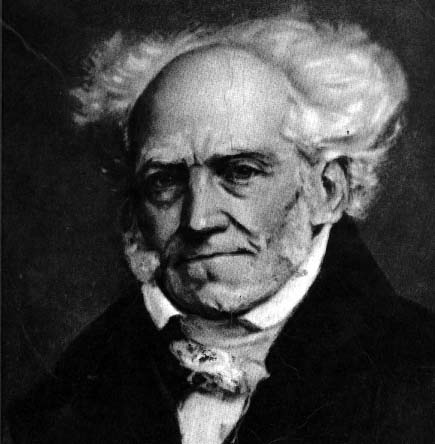


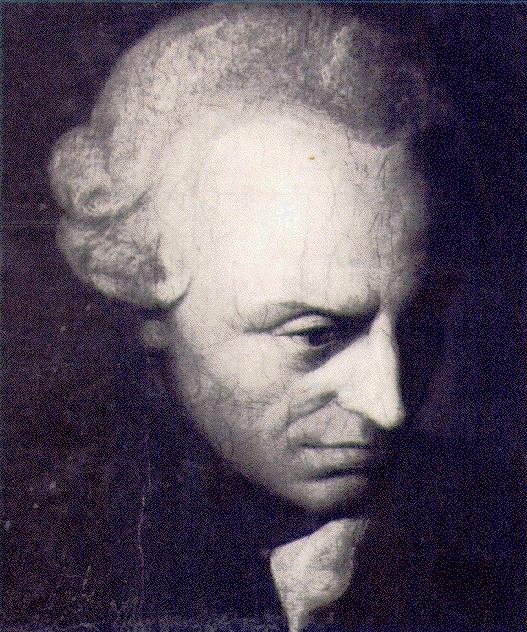
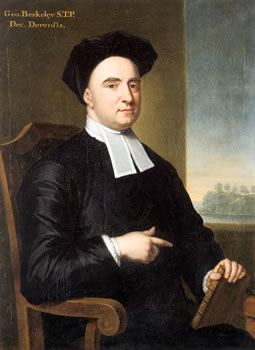















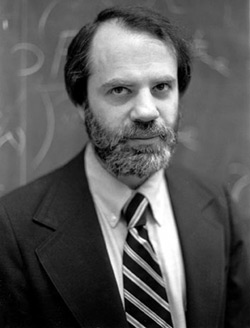


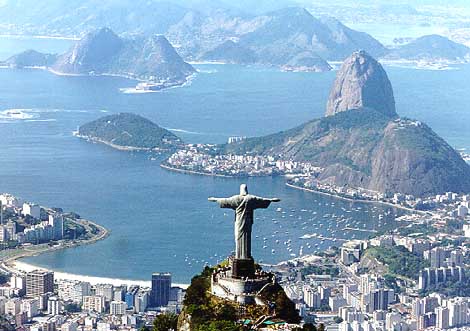

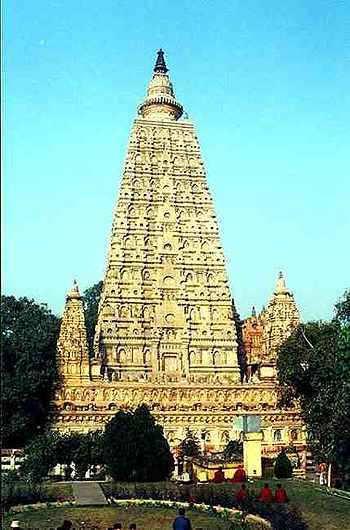



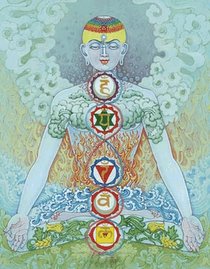



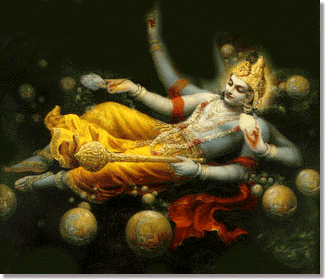





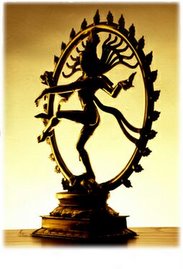



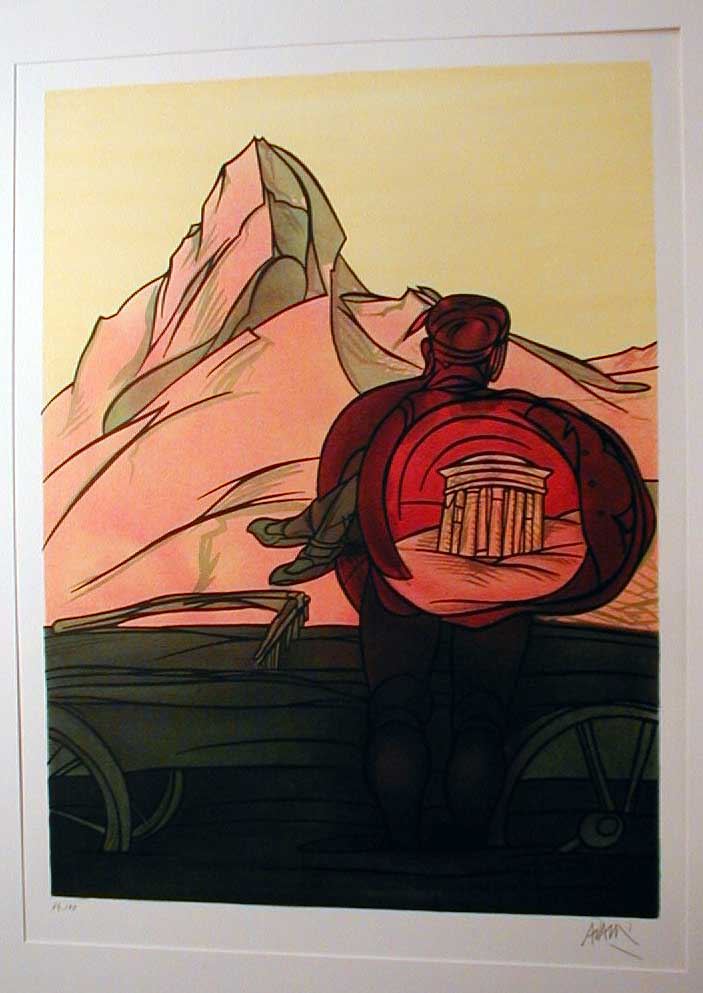
















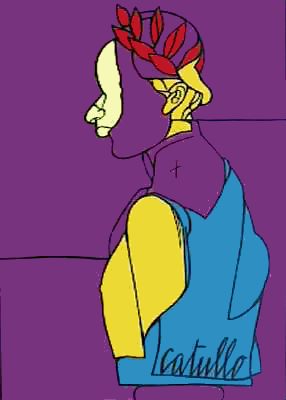



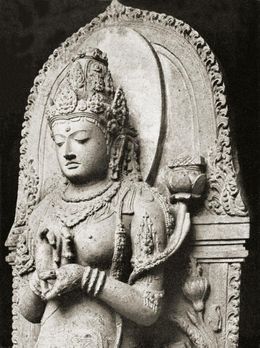
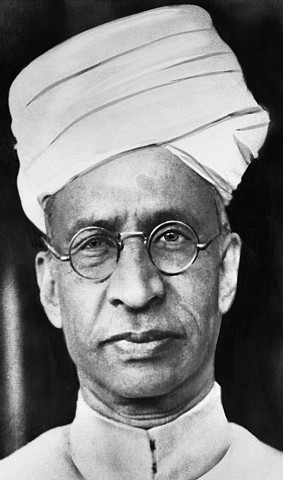
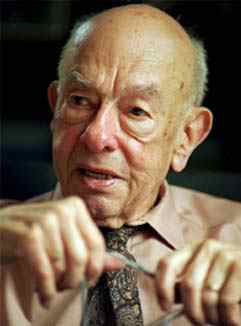





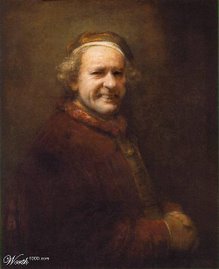







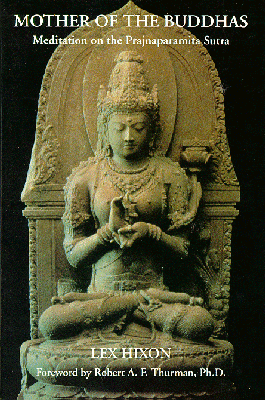
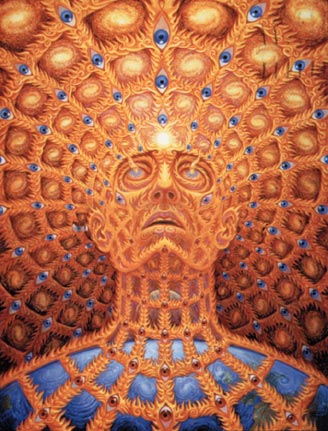
No comments:
Post a Comment